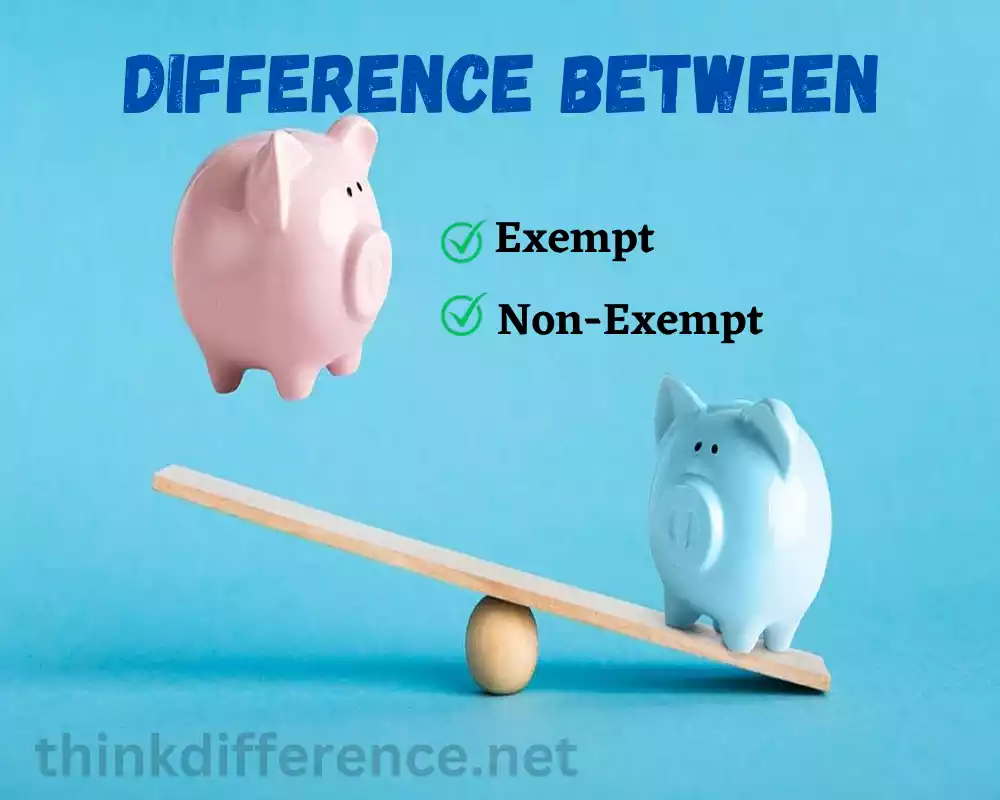Exempt and Non-Exempt classifications play an integral role, as this classification determines benefits, eligibility requirements, and overtime payments for employees. Understanding non-exempt vs exempt classifications is critical both to employees and employers alike – in this article, we’ll look at both classifications that fall under each umbrella as well as differences between each required status as well as benefits that employees are eligible to receive and the value in having accurate classification of workers.
Definition of Exempt and Non-Exempt
Exempt employees are defined by the Fair Labor Standards Act as those not receiving overtime pay under its regulations and exemption from overtime compensation and minimum wage regulations. Exempt status is typically accorded to workers in specific positions who fulfill set criteria pertaining to work obligations, salary levels, and levels of responsibility within an organization, such as executives, professional administrators, computer workers, or salespeople outside their company.
Non-exempt employees have the right to receive overtime pay over and above 40-hour workweek requirements as stipulated in FLSA, while also adhering to minimum wage laws and labor legislation regulating them. Employers legally required to compensate them 1.5 times their hourly pay must also compensate nonexempt workers with overtime compensation that at minimum meets these guidelines.
Importance of understanding difference between Exempt and Non-Exempt
Understanding the difference between non-exempt and exempt employees is critical for both employers and employees for various reasons.
- Compliance with Labor Laws: The Fair Labor Standards Act sets forth guidelines and regulations regarding minimum wages, overtime pay and other labor standards. If employers understand who falls within an exemption category versus who doesn’t they can ensure compliance with legal penalties such as fines and lawsuits by adhering to all relevant statutes.
- Overtime Compensation: Non-exempt employees are entitled to overtime pay when working beyond 40 hours in one week, so both employer and employee should understand the rules regarding eligibility of overtime before engaging in such work. It is crucial for both to follow them strictly so they receive the proper pay. Failure to accurately classify employees can result in underpayment of wages and potential legal liabilities for employers.
- Salary and Wage Structure: Exempt employees typically earn the same pay rate regardless of how much time they work. Non-exempt workers typically get hourly wages. Understanding the distinction helps employers establish appropriate salary or wage structures, ensuring employees are compensated fairly and consistently.
- Job Responsibilities and Autonomy: Exempt and non-exempt employees often have different job responsibilities and levels of autonomy. Exempt employees typically have higher-level positions, managerial roles or specialized expertise, allowing them more flexibility and discretion in their work. Non-exempt employees may have more defined job tasks and less autonomy. Understanding these differences helps employers assign appropriate job roles and responsibilities.
- Employee Rights and Protections: Non-exempt employees also enjoy protections outlined by labor law, including requirements for rest and meal breaks as well as recordkeeping responsibilities and protection against Retaliation. Employers must be aware of these rights to ensure compliance and avoid potential legal disputes.
- Compensation and Benefits: Classifying workers as non-exempt or exempt can have an impactful on whether or not they qualify for certain benefits, including pay-for-time off and health insurance as well as retirement plans. Understanding the distinction helps employers determine benefit eligibility and design appropriate compensation packages for employees.
Employers need to distinguish between employees who are exempt and those who aren’t, to comply with labor law, provide fair pay to workers, and ensure equal treatment of employees. Employees also benefit by knowing their rights, entitlements and the basis on which their compensation is determined.
Exempt
Exempt employees form a special category of workers exempted from certain requirements imposed under the Fair Labor Standards Act (FLSA), such as minimum wage and overtime regulations. Their classification depends on what duties they fulfill within their field of duties as well as on their level of responsibility or salary requirements.

Here are some key characteristics and considerations regarding exempt employees:
- Job Duties: Exempt employees typically perform executive, administrative, professional, computer-related or outside sales duties. These job roles involve higher-level responsibilities, decision-making authority and specialized knowledge or skills.
- Executive Exemption: The executive exemption applies to employees who primarily manage a business or a recognized department, supervise other employees and have the authority to hire and fire. They exercise significant discretion and independent judgment.
- Administrative Exemption: Employees performing non-manual duties directly related to business operations or management for their employer are eligible for administrative exemption. They exercise discretion and independent judgment in matters of significance.
- Professional Exemption: The professional exemption applies to employees who perform work that requires advanced knowledge in a field of science or learning. These employees typically have acquired specialized education or training.
- Computer Employee Exemption: Employees working as computer system analysts, software engineers, programmers or similar roles qualify for exemption. Their primary duties involve systems analysis, design, development, testing or programming.
- Outside Sales Exemption: The outside sales exemption applies to employees whose primary duties involve making sales or obtaining orders outside of the employer’s place of business. They are primarily engaged in sales activities and are customarily and regularly away from the employer’s premises.
- Salary Basis Test: Exempt employees must be paid on a salary basis, meaning they receive a predetermined and fixed salary that is not subject to reduction based on the quantity or quality of work performed.
- Salary Level Test: To qualify for exempt status, employees must meet certain salary threshold requirements. The specific salary level is subject to change and may vary based on location and specific exemptions.
- Benefits and Drawbacks: Exempt employees generally enjoy benefits such as higher salaries, greater flexibility in work hours and potential for career advancement. They may have fewer protections under certain labor laws and regulations compared to non-exempt employees.
Employers must accurately classify employees as exempt and ensure they fulfill all requirements set out by FLSA, with inaccurate classification leading to serious legal ramifications including penalties, back pay and potential lawsuits. Employees also should know their exemption status so as to understand both rights and responsibilities under relevant laws.
Non-exempt
Non-exempt employees are among those protected under the Fair Labor Standards Act (FLSA), including minimum wages and overtime compensation. Non-exempt workers, unlike exempt ones, are subject to its rules regarding working hours and pay.

Here are some key characteristics and considerations regarding non-exempt employees:
- Overtime Eligibility: Employees who are nonexempt can qualify for overtime pay when working beyond 40 hours in any one week, typically calculated as at least 1.5 times their regular hourly pay rate.
- Hourly Wage: Employees who are nonexempt typically pay per hour of work they perform; this requires employers to accurately track employees’ work hours to guarantee fair compensation for them.
- Minimum Wage: All non-exempt workers are guaranteed at least the state or federal minimum wage per hour of work, though employees subject to both state and federal minimum wage laws may receive only one of those rates – whatever is highest among them.
- Recordkeeping Requirements: Employers are mandated to keep meticulous records on employees who do not exempt from taxation regarding hours worked, wages earned and any relevant information to employment such as breaks or meal breaks or overtime hours worked. Employers also should note any related deductions related to such records such as income tax.
- Rest and meal breaks: Non-exempt employees have the right to specific meal and rest break times as set out by local and state laws, usually provided free and at periodic intervals depending on shift length. These breaks may vary according to state law requirements but typically offer complimentary breaks depending on shift length.
- Labor Law Protections for Non-Exempt Employees: Non-exempt employees are protected under various labor laws that address workplace safety, discrimination in the workplace and harassment issues. Their rights and avenues of recourse in case their protections aren’t respected are acknowledged under such legislation.
- Limited Autonomy: Employees who do not fall within exempt status typically have more clearly-delineated duties and less autonomy compared to exempt employees, meaning they could come under greater supervision while having limited freedom in decision making processes.
- Compensation and Benefits: Employees who aren’t exempt may enjoy different compensation arrangements and benefits than exempt employees, such as overtime pay/paid time off entitlement, health insurance benefits or any other resources provided by employers.
- Schedule and Work Hours: Employees who are nonexempt are typically subject to more stringent work hours requirements and follow specific shift timings or weekly hours requirements in accordance with labor law. Their hours of labor are monitored regularly in order to ensure compliance.
Employers need to correctly classify non-exempt employees so they are in accordance with wage and hour laws and can accurately pay employees while avoiding legal penalties. Employees not considered exempt should know their rights under both FLSA as well as state/local legislation for equitable treatment and fair compensation.
Differences Between Exempt and Non-Exempt
There are various important distinctions between non-exempt and exempt employees. These differences primarily revolve around factors such as overtime eligibility, compensation structure, job responsibilities and legal protections.

Here are the key distinctions:
- Overtime Eligibility: Employees not exempt from overtime can qualify for overtime pay if their work exceeds 40-hours in any one week; on the contrary, employees who are exempt are ineligible regardless of time spent employed.
- Compensation Structure: Employees who are nonexempt are usually paid hourly and receive pay according to how many hours they work; exempt employees typically receive a fixed sum regardless of how long or short a workweek they complete, though additional bonuses or compensation could still apply in some circumstances.
- Employment Responsibilities: Exempt employees tend to hold higher-level roles that require administrative, managerial professional, or other specific responsibilities for administration or management purposes. Exempt workers typically possess greater decision-making authority as well as autonomy and responsibility compared to non-exempt workers who tend to focus more on task completion without much autonomy from management.
- Salary Basis: Employees classified as exempt are paid on a salary-basis, meaning their pay doesn’t depend on either the quality or quantity of work that is performed; non-exempt workers often receive hourly salaries that depend on how many hours are worked each week.
- Legal Protections: Employers not exempt from labor laws provide additional legal protections to nonexempt employees such as rest break and meal records-keeping requirements and protection from threats of retaliation; while exempt employees do not enjoy as many legal safeguards related to working hours, breaks, and standards of labor.
- Flexibility: Nonexempt employees may be limited in their work schedule choices and expected to adhere to set shift or timetable restrictions; on the other hand, exempt employees often enjoy greater autonomy when it comes to scheduling their working hours; they could determine their own work hours with greater freedom.
- Perks and Benefits: For employees exempt from taxes, compensation and benefit packages can vary significantly between tax-exempt employees (who generally receive more comprehensive benefits such as paid time off and retirement plans, health insurance) and non-exempt employees who might still enjoy similar advantages; but eligibility or scope conditions might apply in different ways.
- Career Advancement: Exempt employees tend to enjoy greater career advancement opportunities due to the nature of their jobs which typically demand increased accountability and decision-making capabilities. Non-exempt workers might face more limited chances for advancement within their current positions.
Employers must correctly classify their employees to comply with labor law and offer adequate compensation and benefits packages to each. Furthermore, employees need to understand what rights are available to them as well as any possible career development paths within their companies.
Overtime regulations for Exempt and Non-exempt Employees
As per Fair Labor Standards Act (FLSA), overtime regulations differ according to an employee’s specific classes in order to receive exemption. Here’s a run-down of rules regarding overtime for every category:
Exempt Employees:
- Overtime Exemption: Exempt employees do not qualify for overtime pay and do not receive additional compensation if they exceed 40 hours over any one week of employment.
- Salary-Based Test: Employees exempt from tax are paid on a salary-based test basis and receive an agreed-upon set amount that doesn’t change regardless of how much or the quality of work was completed – they receive equal payment regardless of length of employment or productivity levels.
- Job Duties Test: Employees claiming exemption must also meet specific job duties related to administration, executive computer-related work, professional or sales roles in order to avoid taxation.
- Exempt Employees Do Not Calculate Overtime: Exempt employees do not need to calculate their hours for overtime purposes because they do not fall under the scope of overtime regulations.
- Salaried Non-Exempt Employees: Can be considered non-exempt despite receiving their salary; in such instances they should receive overtime compensation if their total hours worked exceed 40 within any week, regardless of pay status.
Non-Exempt Employees:
- Overtime Eligibility: Non-exempt employees may qualify for overtime pay if their work exceeds 40 hours per workweek.
- Overtime Rate: Overtime pay for non-exempt employees is typically calculated as at least 1.5 times their regular hourly wage. Some jurisdictions may have higher overtime rates or additional requirements.
- Weekly Overtime: Non-exempt employees receive overtime for every hour worked over 40 in any workweek regardless of how many hours are worked each day.
- Recordkeeping: Employers are required to maintain accurate records of employees not exempt from tax working hours – both overtime and regular hours – in order to ensure fair pay for these workers.
Employers must classify employees appropriately to comply with overtime regulations or else face legal repercussions such as penalties, back pay and possible lawsuits. Employers should become acquainted with FLSA regulations prior to classifying any of their employees to ensure adherence. Employers can consult legal experts when classifying workers to guarantee compliance.
Pros and cons of Exempt and Non-exempt classifications
Exempt Classification:
1. Pros:
- Salary Stability: Exempt employees typically receive a fixed salary, providing financial stability regardless of the number of hours worked.
- Greater Autonomy: Exempt employees often have more freedom and discretion in decision-making and managing their work.
- Career Advancement: Exempt positions often offer opportunities for career growth, as they involve higher-level responsibilities and specialized knowledge.
- Flexibility in Work Hours: Exempt employees may have more flexibility in setting their work schedules and balancing personal and professional commitments.
2. Cons:
- Longer Work Hours: Exempt employees may be expected to work beyond a standard 40-hour workweek without receiving overtime payment.
- Limited Overtime Compensation: Exempt employees do not qualify for additional wages when working overtime beyond normal working hours, regardless of extending beyond them.
- High Workload and Responsibility: Exempt employees often bear significant responsibility and may face heavier workloads and greater stress levels.
- Less Protection under Labor Laws: Exempt employees have fewer specific legal protections related to working hours, breaks and other labor standards compared to non-exempt employees.
Non-Exempt Classification:
1. Pros:
- Overtime Compensation: Employees not covered by exempt status have the right to request and receive overtime pay when working beyond 40 hours in one week, which provides additional income opportunities.
- Clarifying Work Hour Expectations: Employees who are nonexempt must have clearly laid-out guidelines stipulating the maximum hours per week they can work while still striking an equilibrium between work and personal obligations.
- Non-Exempt Employee Protections: Expand Non-exempt employees have many protections for their rights as employees, such as meals and rest breaks as well as protections against wage and hour laws being broken.
- Potential of Higher Earnings: Employees who aren’t exempt may see higher earnings with overtime pay if their work frequently extends past regular hours.
2. Cons:
- Uncertain Income: Non-exempt employees’ pay is directly proportional to the hours worked, meaning earnings can fluctuate considerably from week-to-week.
- Limited Flexibility: Non-exempt employees may have less flexibility in setting their work schedules, as they are required to adhere to specific shift timings or weekly hour requirements.
- Less Autonomy in Decision-Making: Non-exempt employees may have limited authority and autonomy in decision-making as their roles are often more task-oriented and less managerial.
- Career Limitations: Non-exempt positions may offer fewer opportunities for career advancement compared to exempt roles that involve higher-level responsibilities and decision-making.
Both non-exempt and exempt classifications offer distinct advantages and disadvantages. When choosing between them it is important to carefully consider an employee’s circumstances, work duties and personal preferences when making this determination.
Common misconceptions about exempt and non-exempt employees
Misconceptions about exempt and non-exempt employees can arise due to misunderstandings knowledge of the specific regulations and criteria surrounding these classifications. Here are a few widely held misconceptions:
1. Misconception: Exempt employees never receive overtime pay.
Reality: Exempt employees are exempt from overtime pay under the Fair Labor Standards Act (FLSA), typically receiving a fixed sum to cover hours worked beyond 40 per week. Certain exceptions and state-specific regulations may entitle certain exempt employees to overtime pay.
2. Misconception: All salaried employees are exempt.
Reality: While exempt employees are typically paid on a salary basis, not all salaried employees are exempt. Exempt status depends on meeting specific criteria related to job duties, responsibilities and salary levels as outlined by the FLSA.
3. Misconception: Non-exempt employees cannot be salaried.
Reality: Non-exempt employees can receive a salary rather than an hourly wage. Employees who do not fall under this exempt category have the right to receive overtime pay for working more than 40 hours each week – regardless of whether their wages come in hourly form or as salaries.
4. Misconception: Exempt employees have more rights and protections than non-exempt employees.
Reality: Exempt and non-exempt employees have different rights and protections under labor laws. Non-exempt employees enjoy extra safeguards like minimum wage, overtime pay and rest break obligations. Exempt employees still enjoy various employment protections and benefits, albeit with different focus areas.
5. Misconception: Job titles determine exempt or non-exempt status.
Reality: Exempt or non-exempt status is not solely determined by job titles. Rather, it is based on the specific job duties and responsibilities an employee performs, as well as meeting the FLSA’s criteria for exempt categories like executive, administrative, professional, computer-related or outside sales roles.
6.Misconception: Employers can classify employees as exempt or non-exempt based on their preferences.
Reality: Employee classification must adhere to the guidelines and regulations outlined by the FLSA. Employers cannot arbitrarily classify employees based on their preferences or convenience. Misclassification may result in legal penalties such as penalties, backpay and even litigation.
Employers seeking accuracy in classification and compliance with labor laws are advised to seek assistance from legal or labor experts when classifying employees either non-exempt or exempt.
Importance of proper classification
Proper classification of employees as exempt or non-exempt is of utmost importance for both employers and employees. Here are some key reasons why proper classification is crucial:
- Conformance With Labor Laws: Employers that apply proper classification methods ensure compliance with federal, state and local labor laws pertaining to classification practices such as Fair Labor Standards Act (FLSA). Failure to do so could incur legal ramifications such as fines, back pay or even lawsuits from their workforces.
- Accurately Calculating Compensation: Employing staff accurately will guarantee they receive their appropriate pay. Those not exempt may qualify for overtime pay over and above normal workweek, while exempt employees typically are compensated with a fixed monthly amount regardless of hours employed.
- Avoiding Wage and Hour Violations: Misclassification could result in violations of wage and hour laws. For example, not paying overtime pay correctly or failing to calculate wages accurately could cause significant financial and legal liability issues for both employees and employers alike. Misclassifying employees could create serious legal liabilities as well as potential financial loss for all concerned.
- Fair Treatment and Employee Relationships: Categorizing employees correctly fosters transparency and fairness within the workplace, by informing workers about their rights, entitlements and compensation packages. Doing this also fosters positive relations among staffers as well as establish trust between workers and employers.
- Protection of Employee Rights: Non-exempt employees have certain legal protections under labor law that include minimum wage, overtime pay and rest break requirements. By properly classifying workers they will enjoy these rights and protections so they may exercise them when needed.
- Prevent Legal Risks: Failing to properly classify employees can expose employers to legal risks such as wage theft lawsuits. Proper classification reduces both legal disputes and costs associated with them.
- Effective workforce planning: Acknowledging the makeup of both non-exempt and exempt employees helps employers to efficiently organize and manage their workforce, including staffing requirements for staffing schedules and resource allocation specific to employee groups.
- Ensuring Consistency and Equity: A consistent and accurate classification system creates an environment of fairness within any business, assuring employees who share similar positions are treated uniformly in terms of benefits and compensation packages.
- Avoid Audit Risks: Misclassification can prompt government agencies like the Department of Labor to conduct audits; by properly classifying employees, employers are able to reduce this possibility as well as minimize associated disruptions for their business.
- Building a Positive Employer Brand: Establish a positive employer brand By adhering to proper classification practices and compliance with labor laws, companies can establish themselves as trustworthy businesses that bring in top talent. Doing this will increase sales while building an exceptional work experience environment for their staff members.
Classifying employees accurately is of great significance when it comes to legal compliance and creating an equitable work environment for your staff. Employers must periodically audit employee classifications so as to comply with changing labor regulations and laws – this ensures legality while creating positive working conditions and environments.
Best practices for determining Exempt and Non-Exempt Status
Determining employee classification requires careful evaluation of duties assigned, legal obligations and their own legal responsibilities. Here are some guidelines when categorizing your employees:
- Understand the Applicable Laws: Discover state, federal and local labor laws which define employee classification – for instance The Fair Labor Standards Act (FLSA). These laws outline specific criteria for exempt and non-exempt categories and provide guidance on job duties, salary thresholds and other relevant factors.
- Conduct Job Analysis: Conduct a thorough analysis of each employee’s job duties and responsibilities. Evaluate factors such as the level of decision-making authority, supervisory responsibilities, specialized knowledge and job autonomy. This analysis will help determine if the position meets the criteria for exempt classification.
- Consult Legal Experts: Seek guidance from legal professionals, HR consultants or labor experts with expertise in employment law. They can provide valuable insights, interpret legal requirements and help assess the exempt or non-exempt status of employees based on specific job characteristics.
- Review Job Descriptions: Regularly review and update job descriptions to accurately reflect the job duties and responsibilities of each position. Ensure that job descriptions align with the actual tasks performed and adhere to the legal criteria for exempt and non-exempt classifications.
- Consider Salary Thresholds: For exempt positions, be aware of any salary thresholds set by applicable laws. For example, the FLSA sets a minimum salary threshold for exempt employees. Ensure that employees meet the salary requirements in addition to the job duties criteria for exempt status.
- Document the Classification Process: Maintain clear documentation of the process used to determine exempt or non-exempt status for each employee. Keep records of job analyses, job descriptions, salary information, and any legal guidance or expert opinions sought during the evaluation process.
- Regularly Review and Update Classifications: Conduct periodic reviews of employee classifications to ensure ongoing compliance with changing laws and evolving job responsibilities. Changes in job duties or organizational structures may require re-evaluating the exempt or non-exempt status of employees.
- Provide Training and Education: Train managers, HR professionals, and other relevant personnel on the criteria for exempt and non-exempt classifications. Ensure they understand the importance of proper classification and the potential legal implications of misclassification.
- Seek Legal Counsel for Complex Cases: In complex situations where the exempt or non-exempt status is unclear or disputed, consider consulting legal counsel to assess the situation and determine the appropriate classification.
- Stay Updated on Regulatory Changes: Stay informed about changes in labor laws and regulations that may impact employee classifications. Monitor updates from government agencies and consult legal experts to ensure ongoing compliance.
Properly determining exempt and non-exempt status requires a thoughtful and well-documented approach. By following these best practices, employers can make accurate classifications, mitigate legal risks and maintain compliance with labor laws.
Consequences of misclassification
Misclassifying employees could have serious repercussions for employers. Here are a few potential repercussions associated with misclassification of workers as non-exempt or exempt employees:
- Back Wages: Misclassified employees may be entitled to receive back wages for unpaid overtime or other compensation owed to them. This could include the difference between their actual earnings and what they should have been paid under the correct classification.
- Overtime Pay: Misclassified non-exempt employees who were not paid overtime may be eligible to receive additional compensation for the overtime hours worked. This can include an overtime premium, typically calculated at 1.5 times their regular rate of pay.
- Penalties and Fines: Employers that fail to properly classify employees may face stiff fines and penalties from government agencies charged with applying labor law. Penalties may vary based on both jurisdiction and severity.
- Lawsuits and Legal Claims: Misclassified employees may file lawsuits or legal claims seeking unpaid wages, overtime pay and damages resulting from misclassification. This can lead to costly legal proceedings, attorney fees and potential settlements or judgments against the employer.
- Reputational Damage: Misclassification cases can negatively impact an employer’s reputation. Negative publicity and perceived unfairness for employees could damage a business’s image and have adverse repercussions for its relationships with its customers, clients, partners, suppliers, employees and the wider community.
- Audit and Compliance Reviews: Misclassification can trigger audits or compliance reviews by government agencies, such as the Department of Labor. These audits can result in additional scrutiny of the employer’s practices, potentially uncovering other violations or deficiencies.
- Increased Payroll Costs: Misclassifying employees can lead to unexpected payroll costs, including retroactive payments for unpaid wages, overtime and additional benefits that should have been provided to misclassified employees. This can strain the organization’s financial resources.
- Loss of Employee Trust and Morale: Employees who perceive they’ve been misclassified may suffer an erosion in trust from their employer, leading to decreased morale among staff members, less productivity and greater employee turnover rates, which ultimately impacts general performance within a business.
- Compliance Obligations: Employers could be required to correct errors in classification and modify procedures so as to be in line with labor law requirements. This may involve implementing new policies, procedures and systems to accurately classify and compensate employees.
- Government Scrutiny and Investigations: Misclassification practices may attract the attention of government agencies, triggering further investigations into an employer’s compliance with labor laws. This can result in increased oversight, potential audits and ongoing scrutiny of the employer’s employment practices.
Employers seeking to avoid misclassification must proactively review employee classifications, seek legal guidance as necessary and comply with relevant labor laws. Taking corrective action and promptly addressing misclassification issues can help minimize legal risks and protect both the employer and employees involved.
Seeking legal advice for classification matters
Seeking legal advice for classification matters is highly recommended to ensure compliance with labor laws and minimize the risk of misclassification. Here are some reasons why employers should consider consulting legal professionals:
- Expertise in Employment Law: Employment attorneys specialize in labor and employment law and have in-depth knowledge of the legal requirements and regulations surrounding employee classifications. They can provide guidance on how to properly classify employees based on job duties, salary thresholds and other relevant factors.
- Interpretation of Complex Laws: Employment laws can be complex and vary across jurisdictions. Legal professionals can interpret relevant regulations, laws and court rulings to offer precise advice tailored specifically for your circumstances. They can help you understand the nuances and exceptions related to exempt and non-exempt classifications.
- Mitigating Legal Risks: Employment attorneys can assess the risk of misclassification and advise on proactive steps to mitigate legal risks. They can review your classification practices, identify potential issues and recommend strategies to ensure compliance with labor laws and minimize exposure to lawsuits, penalties and fines.
- Compliance with Changing Laws: Labor laws are subject to change and updates. Legal professionals stay informed about legislative developments, regulatory changes and court precedents that impact employee classifications. They can help you navigate these changes and ensure ongoing compliance.
- Evaluation of Individual Cases: Every organization and job position is unique, and the classification determination requires a careful analysis of specific job duties and responsibilities. Employment attorneys can evaluate individual cases, conduct job analyses and provide tailored advice based on the particular circumstances of each employee and position.
- Assistance in Audits and Investigations: If your organization faces an audit or investigation by government agencies, such as the Department of Labor, legal professionals can provide guidance throughout the process. They can help prepare the necessary documentation, represent your interests and ensure compliance with audit requests and inquiries.
- Defense in Legal Disputes: If a misclassification claim or lawsuit arises, employment attorneys can represent your organization’s interests and defend against allegations of misclassification. They can develop legal strategies, gather evidence, negotiate settlements or litigate the case in court if necessary.
- Confidentiality and Privilege: Communications with legal professionals are typically protected by attorney-client privilege, which ensures that the information shared remains confidential. This allows for open and honest discussions about sensitive classification matters without fear of disclosure.
For legal guidance in employment matters and labor law matters, selecting an experienced employment law and labor expert is absolutely critical. They should have a deep understanding of the specific laws and regulations applicable to your jurisdiction and industry. Working closely with legal professionals can help ensure accurate classification, compliance with labor laws and mitigate the legal risks associated with employee misclassification.
Conclusion
Employers must understand the differences between Exempt employees and Non-Exempt workers to comply with labor laws and foster an enjoyable working environment. Proper classification will prevent legal complications while assuring fair wages – employers should regularly communicate and review employee classifications to create productive workforces that thrive under them.



